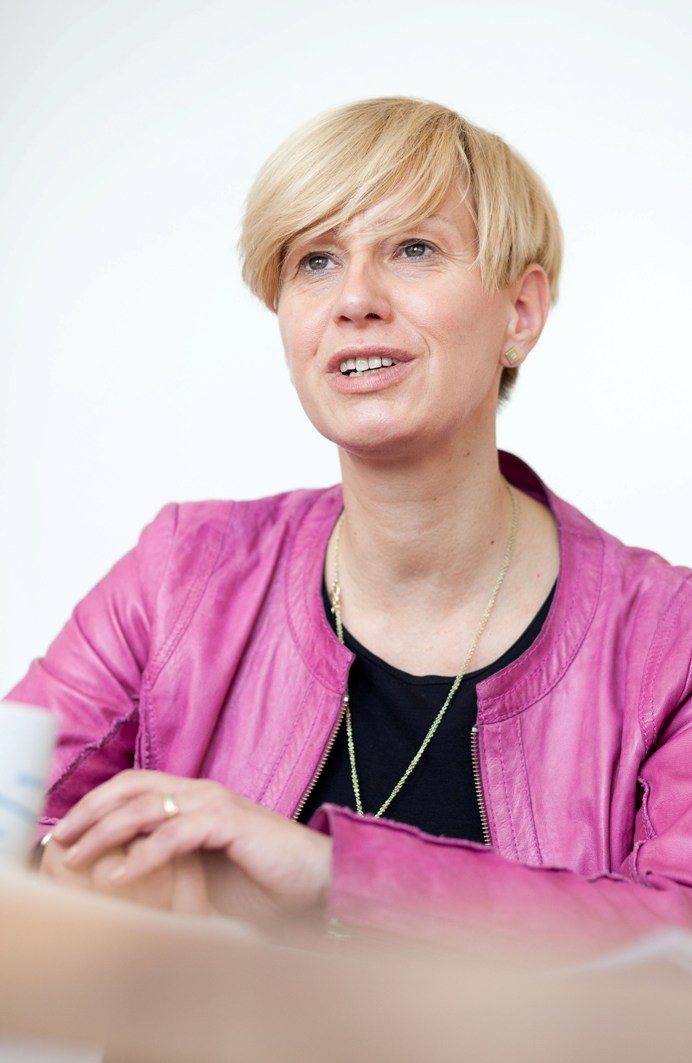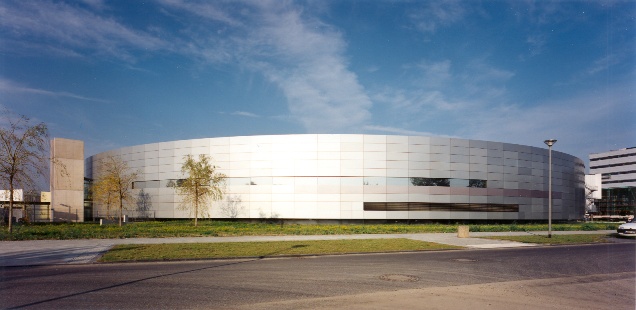 In Berlin (Germany), a research center for materials and energy attracts around 2.500 scientists from the world each year with its two main large scale facilities for investigating the structure and function of matter: the neutron source BER II and the synchrotron source BESSY II. Professor Anke Kaysser-Pyzalla, the scientific director of that research center (the Helmholtz-Zentrum Berlin für Materialien und Energie – HZB), is one of the plenary speakers of the XII SBPMat meeting. In her talk, Kaysser-Pyzalla will address the capabilities for research on solar energy materials of the center, focusing on thin film photovoltaics and solar fuels.
In Berlin (Germany), a research center for materials and energy attracts around 2.500 scientists from the world each year with its two main large scale facilities for investigating the structure and function of matter: the neutron source BER II and the synchrotron source BESSY II. Professor Anke Kaysser-Pyzalla, the scientific director of that research center (the Helmholtz-Zentrum Berlin für Materialien und Energie – HZB), is one of the plenary speakers of the XII SBPMat meeting. In her talk, Kaysser-Pyzalla will address the capabilities for research on solar energy materials of the center, focusing on thin film photovoltaics and solar fuels.
Anke obtained her PhD degree with a thesis in Materials Science from the Ruhr University Bochum (Germany), where she is a full university professor since 2011. Priorly, she was a member of the scientifc staff of the Hahn-Meitner-Institute (Berlin), of the Institute of Materials Science and Technologies from Technische Universität Berlin and at the Max-Planck-Institut für Eisenforschung (Düsseldorf), where she also was director and chief executive. She is the editor of the “Journal of Applied Crystallography”.
See below our interview with the lecturer.
SBPMat: – Could you briefly describe the potential of BER II and BESSY II facilities for research in the field of solar energy?
Anke Kaysser-Pyzalla (A.K.P): – Thin film materials used for solar cells are predestined for studying at a synchrotron facility. Especially at the interfaces of the different layers there are effects causing current loss in the solar cell. These processes we wish to understand in order to develop better solar materials. At BESSY II many such studies are carried out. The demand is strong. Therefore, we are building a new lab for preparation and analysis of samples for solar energy and catalysis research called EMIL (Energy Materials In Situ Laboratory Berlin). This lab will open in 2015 and it will have direct access to BESSY II beamlines. The deposition of the layers can then be studied in situ at the synchrotron, without having to break the vacuum. This is unique in the world. BER II also offers opportunities for research on solar materials. Neutrons are particularly well suited to distinguish the electronically similar elements copper and zinc in a crystal structure. At HZB we use it for studying chalcopyrite and kesterite materials at BER II.
SBPMat: – In Brazil, in Campinas city, there is a Synchrotron national facility. Which are the differences between Campinas and HZB´s facilities?
A.K.P.: – LNLS in Campinas is a second generation synchrotron source, whereas the HZB’s photon source BESSY II is of third generation. Third generation sources enable full polarization control and higher brilliance by the use of undulator devices. With the opening of Sirius the near future will bring the newest generation of synchrotron sources to Brazil. This will give access to research with photons for a broad scientific community in the Americas.
SBPMat: – Can you give some examples of highlighted results obtained at HZB on the area of solar energy materials?

A.K.P.: – Just recently a group of HZB published groundbreaking results in collaboration with the University of Delft (Netherlands) in the field of solar fuels. HZB considers solar fuels as one of the next big topics in solar energy research, promising to offer solutions for the storage and transport of solar power-generated energy. The group realized a water splitting device by combining a common solar cell with a photo anode made of metal oxides. The oxide system allows for relatively cheap and stable devices in comparison to other cells based on expensive III-V semiconductors.
Beyond materials research, HZB is actively developing processes of thin film growth. A group of scientists obtained the High Tech Champion Award in 2011 for the establishment of a chemical layer deposition process called ILGAR. The process is based on spray-pyrolysis for metal oxide and absorber layers in compound semiconductor solar cells. The processing is cheap and fast, hence, a highlight of technology transfers.
SBPMat: – Feel free to leave any other comments about your plenary lecture for our readers.
A.K.P.: – One of the grand challenges of this century is the question of clean energy and the sustainable use of natural resources. We need more efficient solar cells, solutions for energy storage and smart catalysts, which are not based on extremely rare elements, but on abundant materials – non-toxic, cheap and possibly recyclable. And we will need new materials for the information technologies of the next generation, which allow more operations while consuming much less energy, for example quantum materials like topological insulators or spintronic materials.
Therefore, we consider energy research and materials research as two sides of the same coin. In order to understand how microscopic structure is linked with macroscopic properties, we need deeper insights into the processes on an atomic and molecular scale. The processes of interest occur in the bulk of materials, at interfaces and surfaces. Our two large scale facilities BESSY II and BER II are excellent tools to investigate these hidden processes in complex materials. The goal of our research is to contribute ideas and solutions for a sustainable and clever use of our finite resources.
